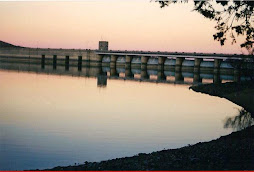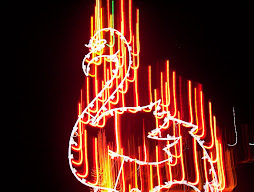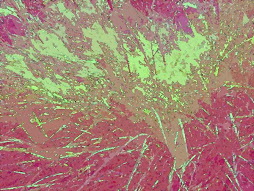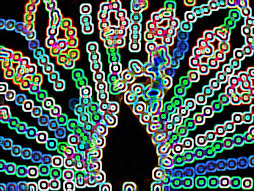Alarming New Fukushima Reports Excerpts:
Five weeks after Japan's disaster, reports suggest worse, not improved conditions. It portends serious regional and global trouble ahead, besides what's already happened.
..a 5.9 level aftershock.. (hit).. the country early Saturday. So far, no additional damage reports were issued. However, seawater radioactive Iodine-131 spiked to 6,500 times above normal, up from 1,100 times Friday, and Cesium-134 and 137 rose nearly fourfold.
Japan's Nuclear and Industrial Safety Agency (NISA) raised the possibility of worrisome new leaks, admitting that tracking them is difficult. Nonetheless, they still claim no threat to humans or sea life despite numerous independent experts raising dire warnings of spreading global radiation, including plutonium, the most deadly substance known, a microscopic speck enough to cause cancer.
And:
On April 11, environmental expert Dr. Ilya Perlingieri's article headlined, "Fukushima's Nuclear Disaster: One Month and Counting," saying:
So far, "(n)othing is even remotely improved. In fact, things are dramatically worse." Hazardous reactors like GE's Mark 1 place entire populations at risk where they operate. "The radioactive consequences of" four Fukushima reactors "far exceed(s) Chernobyl."
As a result, the consequences for all Japanese residents will be enormous. But they also affect others as "various radioactive elements travel (by wind and water) around the globe." Potentially, everyone may be affected to a greater or lesser extent, including future generations.
In addition, dumping thousands of tons of radioactive water into the ocean is an environmental crime. Contaminated water "will now travel across the (Pacific) to North America's West Coast," contaminating the entire food chain in the process.
Then, as "water goes through its cycles, it will evaporate, and radioactive air will be carried around the globe. We are all in grave danger."
Nuclear Overseers Are "Fake" Agencies Funded and Controlled by the Nuclear Power Industry
New video from Arnie Gundersen: Gundersen Discusses Current Condition of Reactors, TEPCO Claim of "No Fission" in Fuel Pool, and Lack of Radiation Monitoring in fish.
Nuke plant workers pump out toxic water Excerpts:
Workers at the quake-hit Fukushima nuclear plant in Japan are removing highly radioactive water from a reactor turbine building, a key step towards restoring cooling systems, the government said.
About 10,000 tonnes of highly radioactive water will be transferred from the turbine building of reactor No. 2 to a treatment facility inside the plant for processing, Japan's Nuclear and Industrial Safety Agency (NISA) said. (This is the troubled reactor Gundersen just told you about, providing you watched the video..)
Robots find radiation too high for humans Excerpts:
Robots deployed inside two reactors at the Japanese nuclear plant overrun by last month's tsunami have detected radiation levels too high for workers to enter, posing challenges for a new plan to bring the ravaged complex under control by year's end.
Workers have not been able to enter four of the reactors at the Fukushima Daiichi Nuclear Power Plant since the days immediately after the earthquake and tsunami March 11. Vital plant cooling systems were knocked out, setting off hydrogen explosions at four of the plant's six reactors that blew off their roofs and littered the site with radioactive debris.
At Unit 1, robots detected radiation of as much as 49 millisieverts per hour, while at Unit 3, the reading was 57 millisieverts per hour. But in recent weeks, far higher readings have come from areas where contaminated water has accumulated, such as the turbine building at Unit 2, where experts say the reactor pressure vessel may be cracked and leaking nuclear material.
Japan automakers' supply chain crisis may 'last months': analysts Read: Many months.. Excerpts:
TOKYO--A component supply crisis that has strangled auto production in Japan and enforced a slowdown overseas in the wake of the March 11 disasters will last several months, analysts say.
..
Power shortages have hit production across all industries and threaten to throw an export-driven economy into a tailspin, analysts say, amid fears the crisis could speed up a shift of production out of Japan already encouraged by the strong yen.
For automakers the world over, the impact has been acute with companies from Toyota to Ford shuttering plants as far away as Britain, the United States, Turkey, France, Australia, Poland and the Philippines amid a supply shock.
“The problem will last for several months and could even last for a year,” said Tatsuya Mizuno, an auto industry analyst with Mizuno Credit Advisory in Tokyo.
“The supply chain for automakers was seriously damaged. (Japanese firms) have around one month of inventories, but some suppliers have suffered so much it is very unlikely that they will be able to restart full production soon.”
Five weeks after Japan's disaster, reports suggest worse, not improved conditions. It portends serious regional and global trouble ahead, besides what's already happened.
..a 5.9 level aftershock.. (hit).. the country early Saturday. So far, no additional damage reports were issued. However, seawater radioactive Iodine-131 spiked to 6,500 times above normal, up from 1,100 times Friday, and Cesium-134 and 137 rose nearly fourfold.
Japan's Nuclear and Industrial Safety Agency (NISA) raised the possibility of worrisome new leaks, admitting that tracking them is difficult. Nonetheless, they still claim no threat to humans or sea life despite numerous independent experts raising dire warnings of spreading global radiation, including plutonium, the most deadly substance known, a microscopic speck enough to cause cancer.
And:
On April 11, environmental expert Dr. Ilya Perlingieri's article headlined, "Fukushima's Nuclear Disaster: One Month and Counting," saying:
So far, "(n)othing is even remotely improved. In fact, things are dramatically worse." Hazardous reactors like GE's Mark 1 place entire populations at risk where they operate. "The radioactive consequences of" four Fukushima reactors "far exceed(s) Chernobyl."
As a result, the consequences for all Japanese residents will be enormous. But they also affect others as "various radioactive elements travel (by wind and water) around the globe." Potentially, everyone may be affected to a greater or lesser extent, including future generations.
In addition, dumping thousands of tons of radioactive water into the ocean is an environmental crime. Contaminated water "will now travel across the (Pacific) to North America's West Coast," contaminating the entire food chain in the process.
Then, as "water goes through its cycles, it will evaporate, and radioactive air will be carried around the globe. We are all in grave danger."
Nuclear Overseers Are "Fake" Agencies Funded and Controlled by the Nuclear Power Industry
New video from Arnie Gundersen: Gundersen Discusses Current Condition of Reactors, TEPCO Claim of "No Fission" in Fuel Pool, and Lack of Radiation Monitoring in fish.
Nuke plant workers pump out toxic water Excerpts:
Workers at the quake-hit Fukushima nuclear plant in Japan are removing highly radioactive water from a reactor turbine building, a key step towards restoring cooling systems, the government said.
About 10,000 tonnes of highly radioactive water will be transferred from the turbine building of reactor No. 2 to a treatment facility inside the plant for processing, Japan's Nuclear and Industrial Safety Agency (NISA) said. (This is the troubled reactor Gundersen just told you about, providing you watched the video..)
Robots find radiation too high for humans Excerpts:
Robots deployed inside two reactors at the Japanese nuclear plant overrun by last month's tsunami have detected radiation levels too high for workers to enter, posing challenges for a new plan to bring the ravaged complex under control by year's end.
Workers have not been able to enter four of the reactors at the Fukushima Daiichi Nuclear Power Plant since the days immediately after the earthquake and tsunami March 11. Vital plant cooling systems were knocked out, setting off hydrogen explosions at four of the plant's six reactors that blew off their roofs and littered the site with radioactive debris.
At Unit 1, robots detected radiation of as much as 49 millisieverts per hour, while at Unit 3, the reading was 57 millisieverts per hour. But in recent weeks, far higher readings have come from areas where contaminated water has accumulated, such as the turbine building at Unit 2, where experts say the reactor pressure vessel may be cracked and leaking nuclear material.
Japan automakers' supply chain crisis may 'last months': analysts Read: Many months.. Excerpts:
TOKYO--A component supply crisis that has strangled auto production in Japan and enforced a slowdown overseas in the wake of the March 11 disasters will last several months, analysts say.
..
Power shortages have hit production across all industries and threaten to throw an export-driven economy into a tailspin, analysts say, amid fears the crisis could speed up a shift of production out of Japan already encouraged by the strong yen.
For automakers the world over, the impact has been acute with companies from Toyota to Ford shuttering plants as far away as Britain, the United States, Turkey, France, Australia, Poland and the Philippines amid a supply shock.
“The problem will last for several months and could even last for a year,” said Tatsuya Mizuno, an auto industry analyst with Mizuno Credit Advisory in Tokyo.
“The supply chain for automakers was seriously damaged. (Japanese firms) have around one month of inventories, but some suppliers have suffered so much it is very unlikely that they will be able to restart full production soon.”









































































































No comments:
Post a Comment